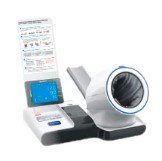Importing Surgical Instruments from China: Regulations, Compliance, and Patient Safety
Summary
- Importing surgical instruments from China for medical labs and phlebotomy practices in the U.S. is subject to restrictions and Regulations imposed by the FDA.
- Quality Control measures must be ensured for imported instruments to meet U.S. standards and Regulations to ensure patient safety and compliance.
- It is important for medical labs and phlebotomy practices to work with reputable suppliers and manufacturers when importing surgical instruments from China.
Introduction
Medical labs and phlebotomy practices in the United States rely on a wide range of surgical instruments to carry out their daily operations. These instruments play a crucial role in ensuring accurate diagnoses and treatment plans for patients. With the globalization of trade, many healthcare facilities have turned to international suppliers for their equipment needs. However, when it comes to importing surgical instruments from China, there are specific Regulations and restrictions that must be adhered to in order to maintain Quality Control and compliance with U.S. standards. In this article, we will explore the potential restrictions on importing surgical instruments from China for use in medical labs and phlebotomy practices in the United States.
Regulations on Importing Surgical Instruments
When it comes to importing surgical instruments from China, the U.S. Food and Drug Administration (FDA) plays a pivotal role in regulating the quality and safety of medical devices entering the country. The FDA has established various requirements that must be met by manufacturers and suppliers of medical instruments in order to ensure the safety and effectiveness of these devices. Some of the key Regulations that apply to imported surgical instruments include:
Quality Control Standards
Medical instruments must meet certain Quality Control standards set by the FDA in order to ensure that they are safe and effective for use in healthcare settings. This includes requirements for materials, design, manufacturing processes, and labeling of the devices. Importers of surgical instruments from China must ensure that these standards are met in order to obtain FDA approval for their products.
Registration and Listing
Manufacturers and importers of medical devices, including surgical instruments, are required to register their facilities with the FDA and list their products with the agency. This allows the FDA to conduct inspections and monitor the quality of the devices being imported into the U.S. Failure to register and list medical instruments can result in fines and regulatory action by the FDA.
Adverse Event Reporting
Importers of surgical instruments from China are also required to report any adverse events associated with their products to the FDA. This includes incidents where the devices may have caused harm or injury to patients. Timely reporting of adverse events is critical to ensuring patient safety and identifying potential issues with the quality of the instruments being imported.
Ensuring Compliance and Patient Safety
Given the importance of surgical instruments in medical labs and phlebotomy practices, it is essential for healthcare facilities to work with reputable suppliers and manufacturers when importing these devices from China. By partnering with trusted companies that adhere to FDA Regulations and Quality Control standards, medical labs can ensure the safety and effectiveness of the instruments they use on a daily basis. This not only protects patients from potential harm but also helps healthcare facilities maintain compliance with regulatory requirements.
Working with Reputable Suppliers
When sourcing surgical instruments from China, medical labs and phlebotomy practices should prioritize working with reputable suppliers that have a track record of compliance with FDA Regulations. Some key considerations when selecting a supplier include:
- Quality Control Measures: Ensure that the supplier has robust Quality Control measures in place to maintain the safety and effectiveness of the instruments being imported.
- Regulatory Compliance: Verify that the supplier is registered with the FDA and lists their products in accordance with regulatory requirements.
- Adverse Event Reporting: Confirm that the supplier has processes in place for reporting any adverse events associated with their products to the FDA in a timely manner.
Conclusion
Importing surgical instruments from China for medical labs and phlebotomy practices in the United States is subject to Regulations and restrictions imposed by the FDA. It is essential for healthcare facilities to ensure compliance with these Regulations in order to maintain Quality Control and patient safety. By working with reputable suppliers and manufacturers, medical labs can source high-quality surgical instruments that meet U.S. standards and help them deliver the best possible care to their patients.

Disclaimer: The content provided on this blog is for informational purposes only, reflecting the personal opinions and insights of the author(s) on the topics. The information provided should not be used for diagnosing or treating a health problem or disease, and those seeking personal medical advice should consult with a licensed physician. Always seek the advice of your doctor or other qualified health provider regarding a medical condition. Never disregard professional medical advice or delay in seeking it because of something you have read on this website. If you think you may have a medical emergency, call 911 or go to the nearest emergency room immediately. No physician-patient relationship is created by this web site or its use. No contributors to this web site make any representations, express or implied, with respect to the information provided herein or to its use. While we strive to share accurate and up-to-date information, we cannot guarantee the completeness, reliability, or accuracy of the content. The blog may also include links to external websites and resources for the convenience of our readers. Please note that linking to other sites does not imply endorsement of their content, practices, or services by us. Readers should use their discretion and judgment while exploring any external links and resources mentioned on this blog.
